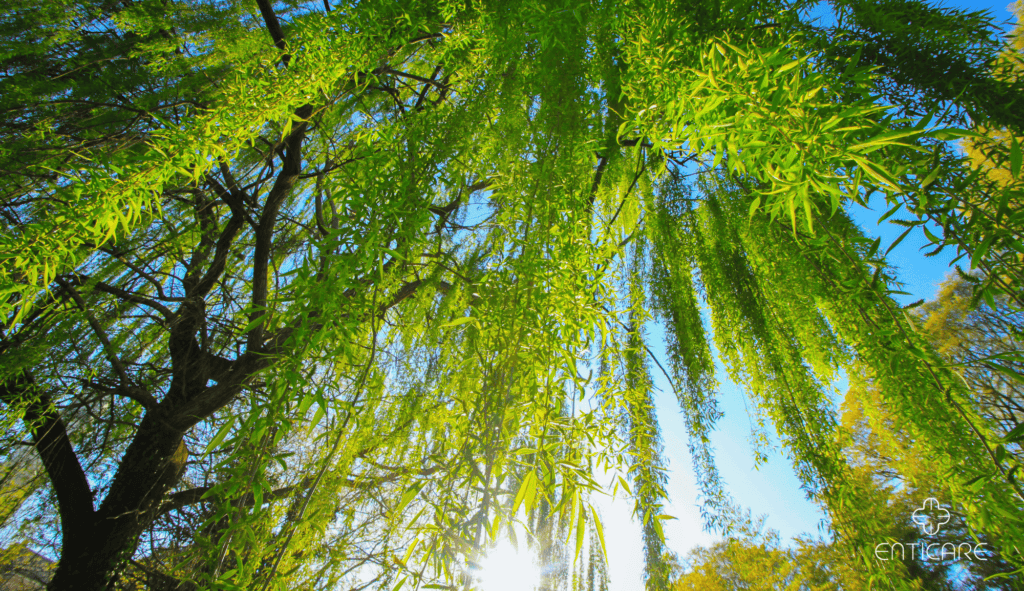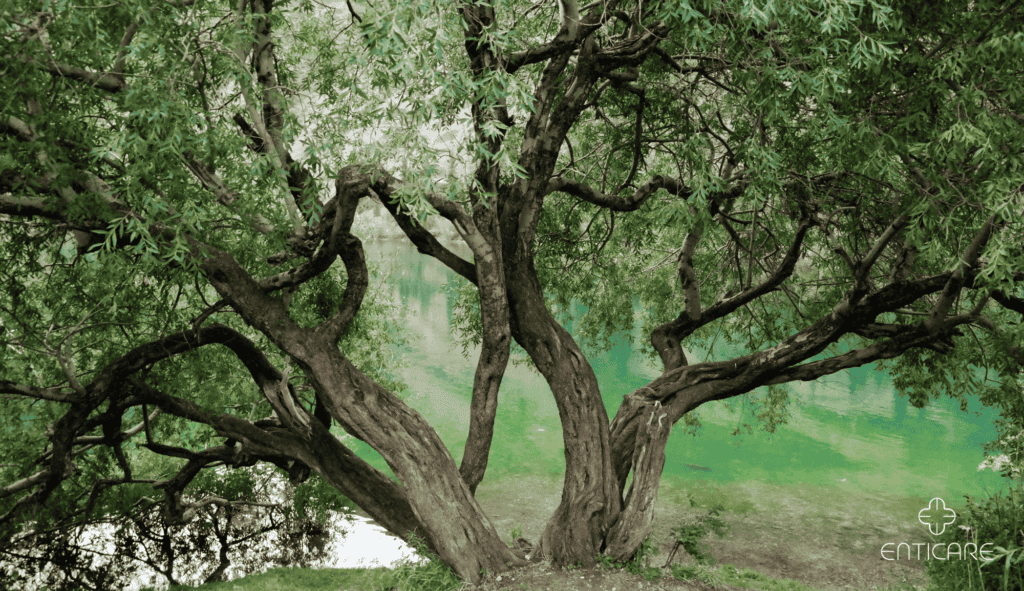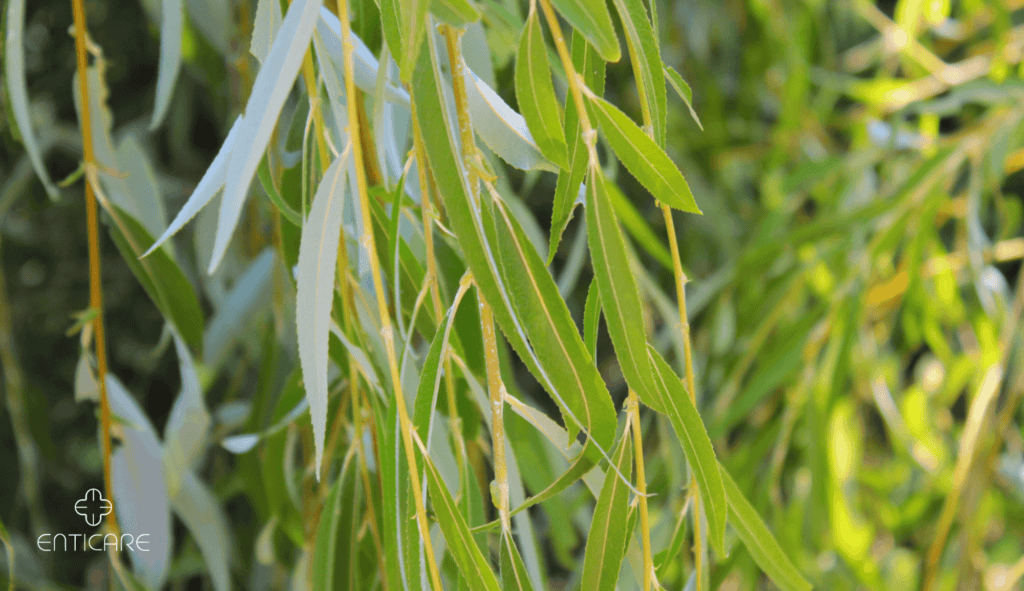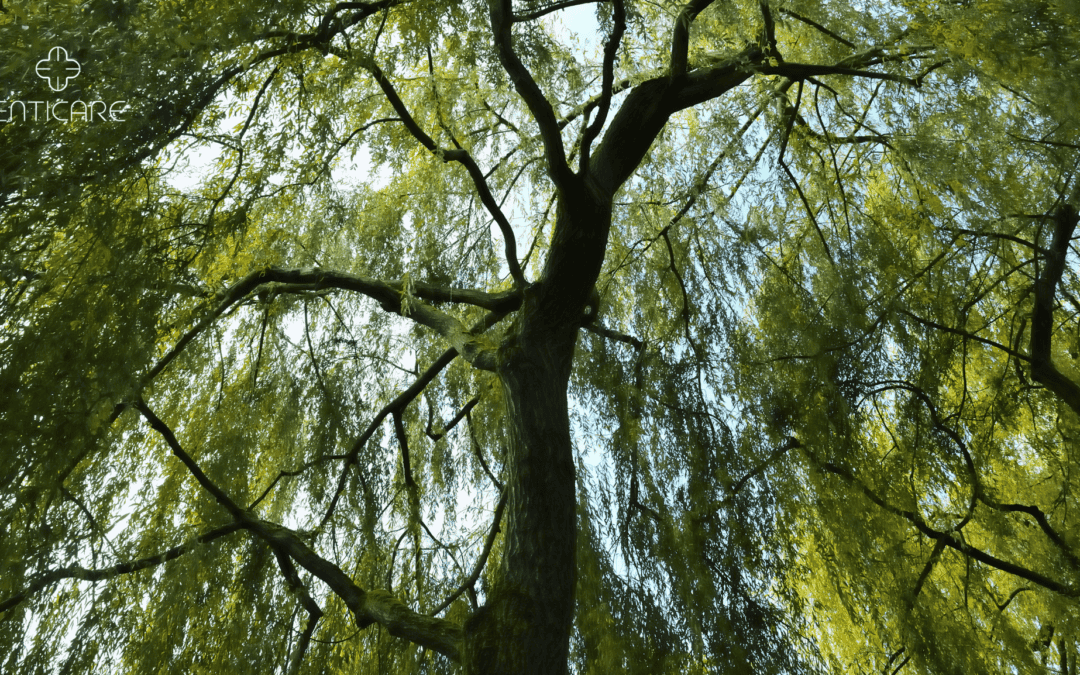Spring has sprung! But for some, the blooming season brings itchy eyes, a runny nose, and a constant feeling of needing a tissue. If you experience these symptoms around black willow trees, you might be suffering from a black willow tree allergy.
This blog delves deeper into this allergy, providing you with facts, causes, symptoms, and most importantly, solutions to manage it effectively.

Black Willow Trees: A North American Beauty
The black willow (Salix nigra) is a fast-growing, deciduous tree native to North America. Known for its graceful, weeping branches and yellow-green leaves, it’s a common sight along riverbanks and wetlands. While beautiful, the black willow produces pollen in the early spring, which can trigger allergies in some people.
Peak Season for Sneezing: When to Be Wary
Black willow trees release pollen from February to April, depending on your location. This period coincides with the beginning of spring, so if you experience allergy symptoms during this time, it’s wise to be aware of black willows in your area.

Recognizing the Enemy: Signs and Symptoms of a Black Willow Allergy
If you suspect a black willow allergy, keep an eye out for these common symptoms:
- Itchy, watery eyes
- Runny or stuffy nose
- Sneezing
- Coughing
- Scratchy throat
In severe cases, wheezing or difficulty breathing (especially if you have asthma)
These symptoms usually appear within minutes of exposure to willow pollen and can last for several hours.
The Culprit Behind the Chaos: Causes of a Black Willow Allergy
Black willow allergies are caused by an overreaction of your immune system to the proteins found in willow pollen. Your body mistakes these harmless proteins for a threat, triggering the release of histamines, chemicals that cause allergy symptoms.
Keeping Allergies at Bay: Prevention Tips
While complete avoidance might be difficult, here are some tips to minimize your exposure to black willow pollen:
Stay informed: Check pollen forecasts to plan your outdoor activities when pollen counts are low (usually mornings after a rain shower).
Keep windows closed: Especially during peak pollen season, keep your windows closed and opt for air conditioning with HEPA filters.
Change clothes: If you spend time outdoors, change your clothes and wash your hair upon returning home to remove any lingering pollen.
Shower regularly: Showering after spending time outside can help remove pollen from your skin and hair.
Maintain a clean environment: Regularly vacuum your home and dust surfaces to remove trapped pollen.
Risk Factors: Who’s More Susceptible?
Certain factors can increase your risk of developing a black willow allergy:
Family history of allergies: If allergies run in your family, you’re more likely to develop allergies yourself.
Hay fever: People with hay fever (allergic rhinitis) are more prone to developing allergies to other airborne allergens, including willow pollen.
Asthma: If you have asthma, exposure to willow pollen can worsen your symptoms.

Battling the sniffles: Treatment Options for Black Willow Allergy
Several treatment options can help manage your black willow allergy:
Over-the-counter medications: Antihistamines like loratadine (Claritin) or cetirizine (Zyrtec) can help alleviate allergy symptoms like sneezing, runny nose, and itchy eyes.
Nasal corticosteroids: Steroid nasal sprays like fluticasone (Flonase) can reduce inflammation in the nasal passages, providing relief from congestion and runny nose.
Allergy shots (immunotherapy): This long-term treatment involves getting regular injections of small amounts of willow pollen over time. It helps desensitize your immune system to the pollen, gradually reducing your allergy symptoms.
Consult your doctor to determine the best course of treatment for your specific needs. They can recommend the appropriate medication or suggest allergy testing to confirm the source of your allergies. Enticare is here to empower your health journey. Connect with us at 480-214-9000 to discover the best course of treatment for you.

